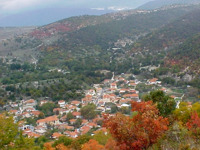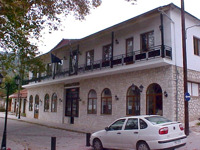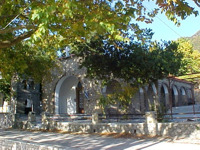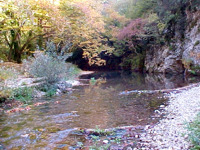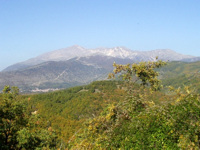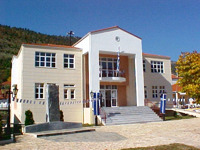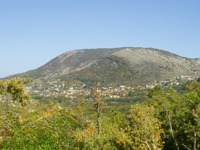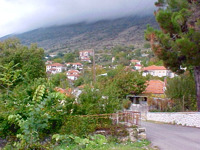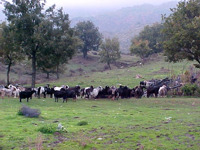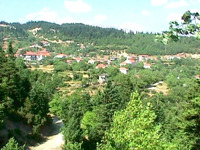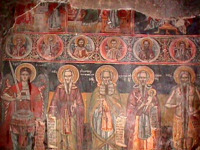Delvinaki is at a distance of 70 km. from the city of Ioannina. It is the seat of the municipality of Delvianki and has about 2.900 habitants. They are at their majority farmers and shepherds because the region is mostly rural. Delvinaki is built into a forested area, among oak trees, chestnut trees, arbutus trees, plane trees, etc.
Delvinaki was a commercial and cultural centre because of its location but also of the emigration of its habitants who succeded professionally at abroad and cared for thei hometown, as it happened to many other places of Epirus. Gradually the alive region of Delvinaki was desolated by numbers of emigrants who abandoned the region during the decades of 1920 and 1930, but also during the decade of 1950 and after.
Nowadays Delvinaki is a picturesque village that has preserved its natural beauty. Every year more and more visitors discover the beauty of its natural landascape and the hospitality of the habitants of Pogoni but also a region that has remained unchanged by the tourists and is offered for unique moments and trips.
A unique musical phenomenon for the region of Pogoni, but also for Greece generally, is the tradition of the polyphonic song, which according the musicians its roots are very old. The habitants of Delvinaki love the polyphonic song, have choirs and every year organise events for the polyphonic music with large audience and participatios. On the first days of August is organised at the municipality of Delvinaki the International Festival of Polyphonic Song.
Delvinaki has a librabry – gallery and many significant churches that you can visit. The nearby valley of Gormos river is offered for beautiful walks.
For your stay at Delvinaki, there are many traditional guesthouses and rental rooms, but also many restaurants and taverns, where you can taste traditional dishes of Epirus.
